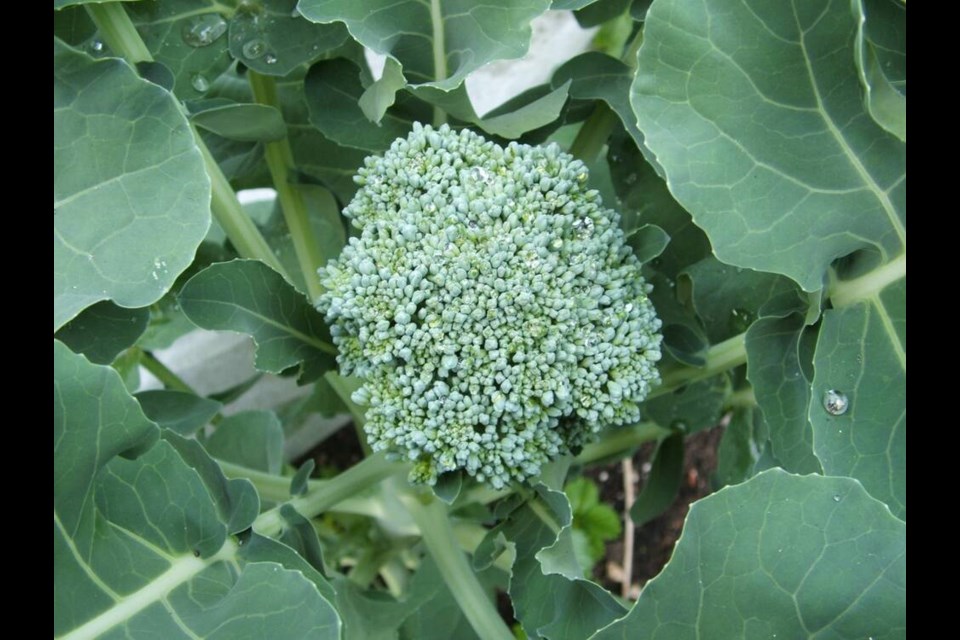The first light frost visited my garden on the night of Oct. 30. Out in the vegetable plots on Halloween morning, I observed only a little damage.
The nasturtium foliage and flowers had wilted. No more cheery little bouquets for the kitchen from those mostly self-sown, outrageously vigorous plants.
A few short Tickled Blush petunia vines remained perky, the blooms unblemished, against wire fencing that supported a Peaches and Cream honeysuckle. This new petunia is spectacular. More of the vines, spilling out from a large metal container at a house corner, were still full of flowers, the foliage fresh and unmarred by the cold.
Snow pea vines, from a July outdoor sowing, remained full of juicy, flavourful pods to snack on and a row of Aspabroc plants held out plenty of small broccoli rosettes ready for picking.
For the first time this year, I made a summer as well as a very early spring sowing of snow peas. The summer seeding has yielded a far more prolific and prolonged harvest of edible pods in the cool of autumn. Aspabroc, a mini-broccoli, produces edible sprouts over many weeks. I’m finding that an early spring and a summer indoor seeding can produce baby broccoli sprouts for much of the year.
Soil care. Given the summer’s heat and drought, I’m more conscious than ever before of the need to send the soil in the four vegetable plots into winter remediated and protected.
As I deal with a section of ground at a time, the first thing is to clear the surface of weeds and spent plantings. Self-sown sweet alyssum abounds through the food garden. It’s had plenty of time to shed more seeds and the little bushes can now be lifted and composted.
Then I dig up and remove the matted clumps of fine feeder roots from the towering forest of cedars crowding against the side fence.
It’s not ideal, to disturb the soil several times a year for this purpose, but the roots cannot be left long enough to create a nearly impenetrable mass. They regrow with alarming speed.
Even after the generous fall rains, the soil in some areas remains fairly dry underneath. I’m noticing the driest areas, and topping them up with a layer of coconut fibre (coir) before spreading small Japanese maple leaves and then straw over top as a protective winter cover.
Even though my soil is plumped regularly with compost, its basic fast-draining sandy texture remains. The absorbent coir will help to hold on to moisture in the driest parts of the plots. I’ll be investing in more bagged coir to use in preparing plots for planting in the spring. This type of soil needs all the added moisture retention I can provide, especially if next year brings another growing season challenged by heat and drought.
A heavy clay soil presents opposite issues. It holds onto moisture, and nutrients, with great efficiency, and drains very slowly of excess moisture. Because it compresses and compacts easily, it should be left alone when it is wet, when walking on and working in it will further damage its structure. My Vernon garden had a heavy, compacted clay soil. It was a back-breaker, but it was also the most productive garden I’ve ever had.
HCP courses. The Horticulture Centre of the Pacific, 505 Quayle Rd. in Saanich, is offering the following classes. For details and online registration go to hcp.ca/events. Register online or by phone: 250-479-6162.
* Plant Identification and culture. The next session in this series will be on Saturday, Nov. 20, 1 to 4 p.m. Diane Pierce will introduce 25 new plants with their descriptions, cultural requirements, general maintenance and landscape uses. This is an ongoing, monthly class. Members $35, others $45.
* Fairy/Gnome Gardens, Saturday, Nov. 20, 10 to 11:30 a.m., for ages six and over. Create a tiny garden to take home and nurture. Members $25, others $30.
* Bird Feeders for Families, Saturday, Nov. 20, 1 to 3 p.m. for family units of up to four people. Following a nature walk, create a simple feeder to attract local birds into the garden. Members $35, others $40.
* Wreath Making in the HCP greenhouses, Nov. 26, 27, 28 and Dec. 3, 4, 5, 10, 11, 12, from 10 a.m. to 12 p.m. or 1 to 3 p.m. Members $50, others $60.



